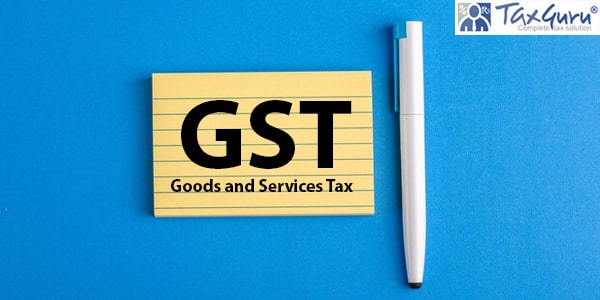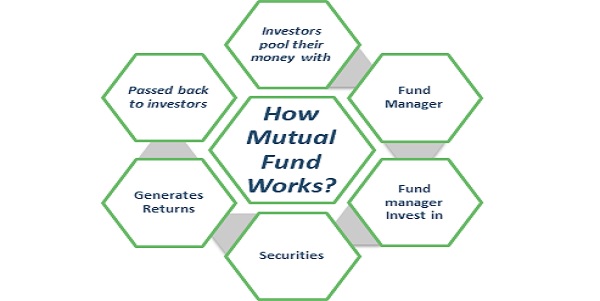Summary of IAS/Ind AS 16 – Property, Plant & Equipment (Useful for Dip IFRS Dec 2020 & June 2021)
IAS 16 covers all aspects of accounting for property, plant and equipment. This represents the bulk of items which are ‘tangible’ non- current assets. It also covers the accounting for depreciation on property, plant & equipment.
Page Contents
1. Scope
IAS 16 should be followed for accounting of property, plant and equipment unless another IAS/IFRS requires a different treatment. IAS 16 does not apply to the following:
a) Biological Assets except bearer plant (IAS 41)
b) Minerals right and mineral reserves, such as oil, gas & other non-regenerative resources (IFRS 6)
c) Property, plant & equipment classified as held for sale ( IFRS 5)
However this standard applies to property, plant & equipment used to develop these assets
2. Definitions
- Property, plant & equipment are tangible assets that are held for use in the production, supply of goods & services & expected to be used during more than one period.
- Cost is the amount of cash & cash equivalents paid or the fair value of the other consideration given to acquire an asset at the time of its acquisition & constructions.
- Residual Value is the net amount which the entity expects to obtain for an asset at the end of its useful life after deducting the expected cost of disposal.
- Carrying amount is the amount at which an asset is recognized in the statement of financial position after deducting any accumulated impairment losses.
- Fair Value is the price that would be received to sell an asset or paid to transfer a liability in an orderly transaction between market participants at the measurement date.
3. Recognition
Recognition simply means incorporation of item in the business’s accounts, in this case as a non-current asset. The recognition of property, plant & equipment depends on two criteria:
a) It is probable that future economic benefits associated with these assets will flow to the entity
b) Cost can be measured reliable
These recognition criteria apply to subsequent expenditure as well as costs incurred initially.
4. Initial Measurement
The cost of items of Property, plant & equipment compromises:
- Purchase price, including import duties, non-refundable purchase taxes, less trade discount & rebate.
Note: Cash discount is not excluded
- Cost directly attributable to bringing the asset to the location & condition necessary for it to be used in a manner intended by management.
- Initial estimates of cost of dismantling/decommissioning removing, & site restoration at present value if the entity has an obligation that it incurs on acquisition of the asset or as a result of using the asset other than to produce inventories.
Directly attributable cost includes:
> Cost of site preparation
> Initial delivery & handling costs
> Installation & assembly costs
> Professional fees
> Employee benefits of those involved in the constructions or acquisition of an assets
> Borrowing costs to the extent allowed by IAS 23
Example of costs that may not be included in the directly attributable costs:
> Training cost
> Administration & other general overheads
> Initial operating loss
> Costs of relocating or reorganizing part or all of the entity operation
> Cost of introducing a new product or service including advertising & promotional cost
> The income & related expenses of operation that are incidental to the construction or development of an item of property, plant & equipment should be recognized in the income statement. Example income may be earned through using a building site as a parking until construction starts. This is not included because incidental operations are not necessary to bring an item to the location and condition necessary for it to be capable of operating in the manner intended by management, the income & related expenses of incidental operations are recognized in the profit or loss and included in their respective classifications of income and expenses.
In case of self-constructed assets, the same principles are applied as for acquired assets. If the entity’s normal course of business is to make these assets and sell them externally, then the cost of the assets will be the cost of its production. This also means that unusual costs (wasted material or labour downtime costs) are excluded from the cost of the assets. An example of a self-constructed asset is when a building company builds its own head office.
- Subsequent Expenditure: This cost is recognized in full when it is incurred and added to the carrying amount of the asset. It will be depreciated over the expected life, which may be different from the expected life of the other components of the asset. Example the passenger seats of the aircraft may have a useful life of 5 years, whereas engines may last for 10 years. The carrying amount of the items being replaced, such as the old passenger seats of the aircraft, are derecognized when the replacement takes place. This means that rather than having a useful life of the 25 years for the entire aircraft, there are different depreciation rates for different, specific elements of it.
- Exchange of assets: IAS 16 specifies that exchange of items of property, plant & equipment, regardless of whether the assets are similar, are measured at fair value, unless the exchange transaction lacks commercial substance or the fair value of neither of the assets exchanged can be measured reliably. If the acquired item is not measured at fair value, its cost is measured at the carrying amount of the asset given up.
5. Measurement subsequent to initial recognition
The standard offers two possible treatments here, essentially a choice between keeping an asset recorded at cost model or revaluation model. However the same policy must be applied to each entire class of property, plant and equipment.
Cost Model carry the asset at its cost less depreciation and any accumulated impairment losses.
Revaluation Model carry the assets at a revalued amount, being its fair value at the date of the revaluation less any subsequent accumulated depreciation and subsequent accumulated impairment losses. The revised IAS 16 makes clear that the revaluation model is available only if the fair value of the item can be measured reliably.
6. Revaluation Model
The market value of Land & Buildings usually represents the fair value, assuming existing use and line of business. Such valuations are usually undertaken by professionally qualified valuers.
In case of plant & equipment, fair value is usually market value. If the market value is not available, fair value is estimated using depreciated replacement cost.
The frequency of valuation depends on the volatility of the fair values of the individual items of property, plant and equipment. The more volatile the fair value, the more frequently revaluations should be carried out. Where the current fair value is very different from the carrying amount then a revaluation should be carried out. Most importantly, when an item of property, plant & equipment is revalued, the whole class of assets to which it belongs should be revalued.
All the items within a class should be revalued at the same time, to prevent selective revaluation of the certain assets and to avoid disclosing a mixture of costs and values from different dates in the financial statements. Items within a class may be revalued on a rolling basis within short period of time provided revaluation are kept upto date.
7. Accounting for a revaluation
How should any increase in value to be treated when a revaluation takes place? The debit will be the increase in value in the statement of financial position, but what about the credit? IAS 16 required the increase to be credited to other comprehensive income and accumulated in a revaluation surplus (part of owner’s equity).
Debit – Assets Value (Statement of financial position)
Credit – Other comprehensive income (revaluation surplus)
If revaluation results in a decrease in value of an asset, the decrease should be recognized in other comprehensive income up to the balance of any remaining revaluation surplus in relation to that assets:
Debit- Other comprehensive income (to the extent of revaluation surplus available)
Debit- Profit or loss (if no revaluation surplus is available)
Credit- Asset value (statement of financial position)
If an asset has previously suffered a decrease in value that was charged to profit or loss, any increase in value on a subsequent revaluation should be recognized in profit or loss up to the net amount of the previously recognized decrease. Any excess should be recognized in other comprehensive income and accumulated in a revaluation surplus:
Debit – Asset value (statement of financial position)
Credit – Profit or loss (with the net amount of previously recognized decrease)
Credit – Other comprehensive income (with the amount of any remaining increase, over and above what has been taken to profit or loss)
Example Agile Co has an item of land carried in its books at $13,000. Two years ago a slump in land values led the company to reduce the carrying amount from $15,000. This was taken as an expense in profit or loss. There has been a surge in land prices in the current year, however, and the land is now worth $20,000. Account for revaluation in the current year.
Solution The entry should be:
| Debit | Asset Value | $7,000 |
| Credit | Profit or loss | $2,000 |
| Credit | Other Comprehensive Income | $5,000 |
Let us simply swap round the example given above. The original cost was $15,000, revalued upwards to $20,000 two years ago. The value has now fallen to $13,000.
Solution The entry should be:
| Debit | Other Comprehensive Income | $5,000 |
| Debit | Profit or loss | $2,000 |
| Credit | Asset Value | $7,000 |
8. Retirement & Disposals
When the assets is permanently withdrawn from the use, or sold or scrapped, and no future economic benefits are expected from its use or disposal, it should be withdrawn from the financial position. Gains or losses are the difference between the net disposal proceeds and the carrying amount of the asset. They should be recognized as income or expense in profit or loss.
9. Derecognition
Any entity is required to derecognize the carrying amount of an item of property, plant or equipment that it disposes of on the date the criteria for the sale in IFRS 15 would be met. This also applies to part of assets. An entity cannot classify as revenue a gain which it realizes on the disposal of an item of property, plant & equipment.
10. Depreciation
IAS 16 requires the depreciable amount of a depreciable asset to be allocated on a systematic basis to each accounting period during the useful life of the asset. Every part of an item of property, plant & equipment with a cost that is significant in relation to the total cost of the item must be depreciated separately.
There are situations where, over a period, an asset has increased in value, i.e. its current value is greater than the carrying amount in the financial statements. You might think that in such situation it would not be necessary to depreciate the asset. The standard states, however, that this is irrelevant, and that depreciation should still be charged to each accounting period, based on the depreciable amount, irrespective of a rise in value.
An entity is required to begin depreciating an item of property, plant and equipment when it is available for use and to continue depreciating it until it is derecognized even if it is idle during the period.
The following factors should be considered when estimating the useful life of a depreciable asset:
- Expected physical wear and tear
- Obsolescence
- Legal or other limits on the use of the assets
Once decided, the useful life should be reviewed at least every financial year end and depreciation rates adjusted for the current and future periods if expectations vary significantly from the original estimates. The effect of the change should be disclosed in the accounting period which the change takes place.
Residual value is the estimated value of depreciable assets at the end of its useful life. Depreciable amount is net of residual value. If the residual value is greater than the carrying amount then in this case depreciation charge is zero.
In case of land & buildings, these are separable assets and are separately accounted for, even when they are acquired together:
– Land normally has an unlimited useful life and is therefore not depreciated
– Buildings normally have a limited useful life and are depreciable asset.
Where land has limited useful life (e.g. a landfill site, mine, quarry) it is depreciated.
Methods of charging depreciation straight line method, reducing balance method, sum-of-the digits method, machine hour method.
The depreciation method selected should be applied consistently from period to period unless altered circumstances justify a change. When the method is changed, the effect should be quantified and disclosed and the reason for the change should be stated. Change of policy is not allowed simply because of the profitability situation of the entity.
11. Disclosure Requirement
> Measurement bases used for determining gross carrying amount
> Depreciation method used
> Useful lives or the depreciation rate used
> Gross carrying amount and accumulated depreciation at beginning and end of the period. Accumulated impairment losses are aggregated with accumulated depreciation.
> Reconciliation of carrying amount at the beginning and end of period.
> Property, plant and equipment pledged as security for liabilities
> Amount of expenditure recognized in the course of construction
> Contractual commitments for the acquisition of property, plant and equipment
> Amount of compensation from third parties for items of property, plant and equipment
Disclosure for revalued assets:
> Effective date of revaluation
> Whether an independent valuer was involved
> Carrying amount of each class of revalued property, plant and equipment if the cost model had been applied
> Revaluation surplus, including movement and any restrictions on distribution of balance to shareholders.
12. Comparison with Ind AS 16
There is no difference between IAS 16 & Ind AS 16, except for the cost model for Ind AS 40 i.e. investment property under cost model is measured as per IAS 16 but as per Ind AS investment property is measured as per Ind AS 40.






















Hi
We have been chosen cost model at the time of implementation of Ind AS in1st April 2015. Now in 2021 can we switch to Revaluation Model for our PPE?
Hi,
There seem to be mistake in the accounting entry point no 7 below…..
Debit Other Comprehensive Income$7,000
Debit Profit or loss $2,000
Credit Asset Value $7,000